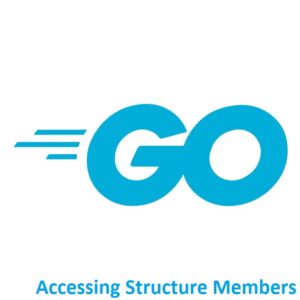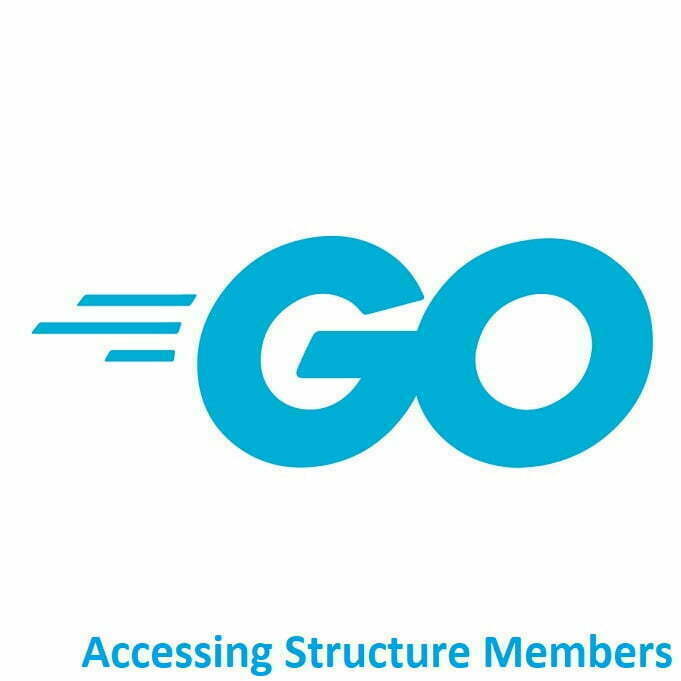
Accessing and Manipulating Struct Fields
Welcome to the world of Golang! Structures, often referred to as structs in Go, serve as fundamental building blocks for organizing and storing related data. This guide focuses on accessing and manipulating struct members, providing insights into effectively working with struct fields for data management in Go programs. You can access the members (fields) of a structure (struct) using the dot notation.
Here’s how you can do it:
Declaration and Initialization:
Before accessing struct fields, you need to declare and initialize a struct. Structs in Go are user-defined types that encapsulate multiple fields.
type Person struct {
Name string
Age int
}
func main() {
// Initializing a struct instance
person := Person{Name: "Alice", Age: 30}
}
Dot Notation for Field Access
Accessing struct fields is done using dot notation (structName.fieldName). This allows you to read or modify individual fields within the struct.
func main() {
person := Person{Name: "Alice", Age: 30}
// Accessing struct fields
fmt.Println(person.Name) // Accessing the 'Name' field
person.Age = 31 // Modifying the 'Age' field
}
Reading and Modifying Fields
Struct fields can be read or modified directly using dot notation. This enables you to access specific pieces of information stored within the struct.
func main() {
person := Person{Name: "Alice", Age: 30}
// Reading struct fields
fmt.Println("Name:", person.Name)
fmt.Println("Age:", person.Age)
// Modifying a field
person.Age = 31
fmt.Println("Updated Age:", person.Age)
}
Pointer Receiver Methods for Field Modification
To modify struct fields within methods, using pointer receiver methods allows direct manipulation of the original struct instance rather than working with a copy.
func (p *Person) IncrementAge() {
p.Age++
}
func main() {
person := Person{Name: "Alice", Age: 30}
person.IncrementAge()
fmt.Println("Incremented Age:", person.Age) // Output: Incremented Age: 31
}
Accessing Nested Struct Fields
If a struct contains other structs as fields, accessing nested fields involves chaining the dot notation to reach the desired nested field.
type Address struct {
City string
State string
}
type Person struct {
Name string
Age int
Address Address
}
func main() {
person := Person{
Name: "Alice",
Age: 30,
Address: Address{
City: "New York",
State: "NY",
},
}
fmt.Println("City:", person.Address.City) // Accessing nested field
}
Accessing struct fields in Go is straightforward using dot notation. It allows for easy retrieval and modification of specific data within a struct, making it a fundamental part of working with structured data in Go programs.
Golang Code Example
Here’s a basic but complete example of how to access struct members:
package main
import "fmt"
// Define a struct
type Person struct {
FirstName string
LastName string
Age int
}
func main() {
// Create an instance of the Person struct
person := Person{
FirstName: "John",
LastName: "Doe",
Age: 30,
}
// Access struct members using dot notation
fmt.Println("First Name:", person.FirstName)
fmt.Println("Last Name:", person.LastName)
fmt.Println("Age:", person.Age)
}
When you run this code, it will print:
First Name: John Last Name: Doe Age: 30
Breaking Down the Code
- We define a struct
Personwith three fields:FirstName,LastName, andAge. - In the
mainfunction, we create an instance of thePersonstruct calledpersonand initialize its fields. - To access the members (fields) of the
personstruct, we use the dot notation, as shown in thefmt.Printlnstatements.
Conclusion
This guide has demonstrated how to access structure members in Go. You simply use the dot notation to access the fields of a struct instance. Understanding how to access and manipulate struct fields efficiently is essential for effective data management in Go. Mastery of struct field manipulation equips developers to organize and handle complex data structures effectively.
That’s All Folks!
You can find all of our Golang guides here: A Comprehensive Guide to Golang



